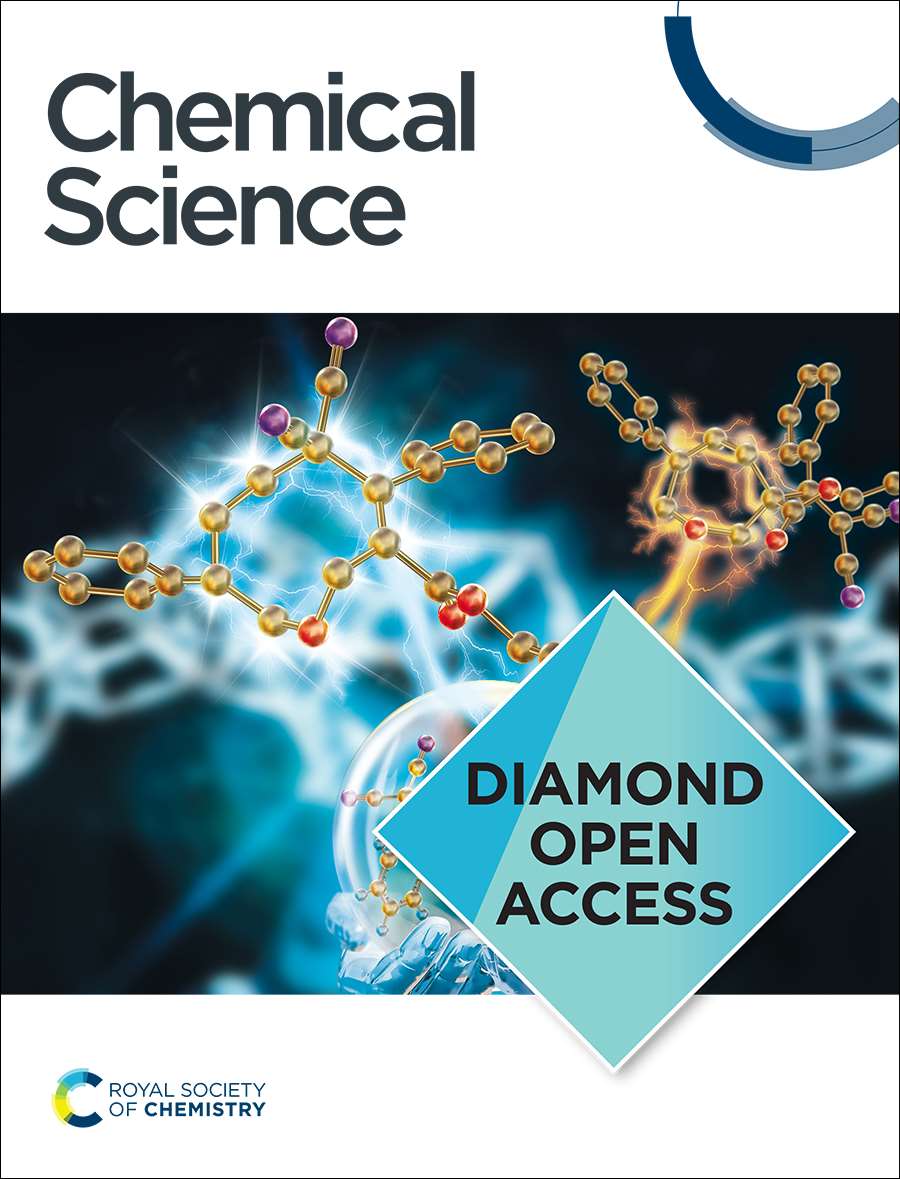Coordination Isomerism in Dioxophosphorane Cyanides
IF 7.6
1区 化学
Q1 CHEMISTRY, MULTIDISCIPLINARY
引用次数: 0
Abstract
The 1,3-Phosphaazaallene DippTerP=C=NtBu (DippTer = 2,6-(2,6-iPr2C6H2)-C6H3) is thermally labile towards iso-butene elimination and formation of the corresponding cyanophosphine DippTerP(H)CN (1). In previous work we have shown facile deprotonation of 1 with K[N(SiMe3)2 and formation of cyanophosphide [(DippTerPCN)K]. We now present the alkali metal tethered cyanophosphides [(DippTerPCN)M(crown)] (M = Na, K; crown = 15-c-5, 18-c-6) and their structural diversity in the solid state depending on the metal M and the crown ether. Facile oxidation of [DippTerPCN][M(crown)] with O2 yields the formal cyanide adducts of dioxophosphoranes [DippTerPO2(CN)]−. Interestingly, [DippTerPO2(CN)]− is obtained as a mixture of the cyanide and isocyanide isomers, indicating a coordination isomerism. This phenomenon is corroborated by experimental and theoretical studies revealing the cyanide isomer to be thermodynamically more stable. The oxidation with elemental sulphur gave the corresponding dithiophosphorane cyanide adduct [DippTerPS2(CN)]−, in which no isomerism was observed. This points to a crucial role of triplet oxygen in the isomerisation process. Monooxidation occurs when [DippTerPO2(CN)]− salts were treated with N2O, giving formal anionic phoshinidene monoxide adducts.求助全文
约1分钟内获得全文
求助全文
来源期刊

Chemical Science
CHEMISTRY, MULTIDISCIPLINARY-
CiteScore
14.40
自引率
4.80%
发文量
1352
审稿时长
2.1 months
期刊介绍:
Chemical Science is a journal that encompasses various disciplines within the chemical sciences. Its scope includes publishing ground-breaking research with significant implications for its respective field, as well as appealing to a wider audience in related areas. To be considered for publication, articles must showcase innovative and original advances in their field of study and be presented in a manner that is understandable to scientists from diverse backgrounds. However, the journal generally does not publish highly specialized research.
 求助内容:
求助内容: 应助结果提醒方式:
应助结果提醒方式:


